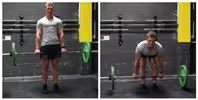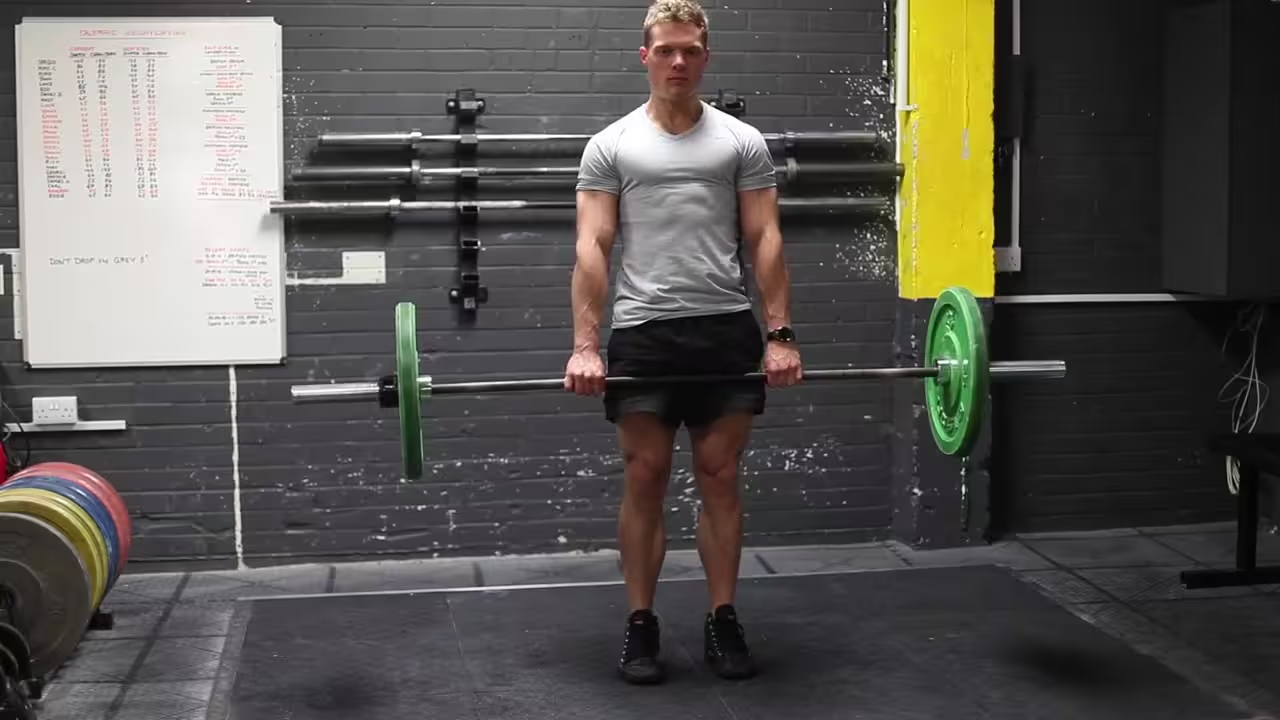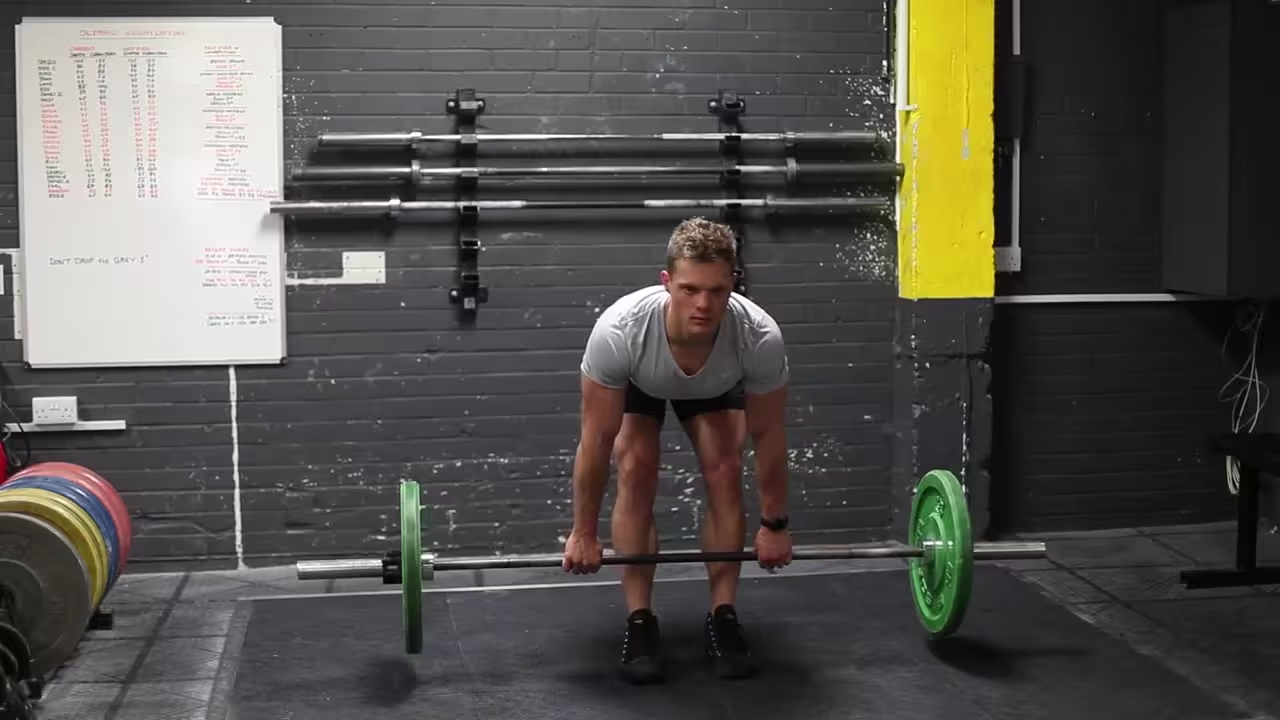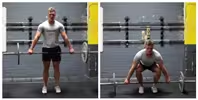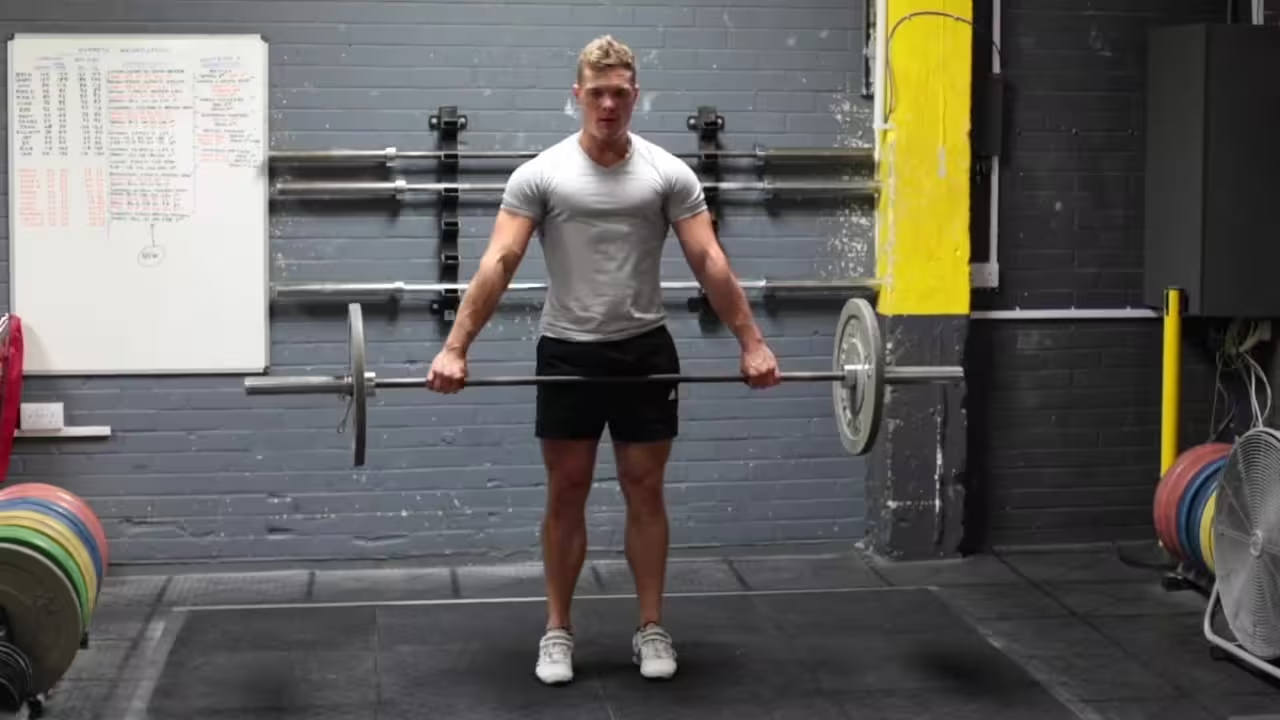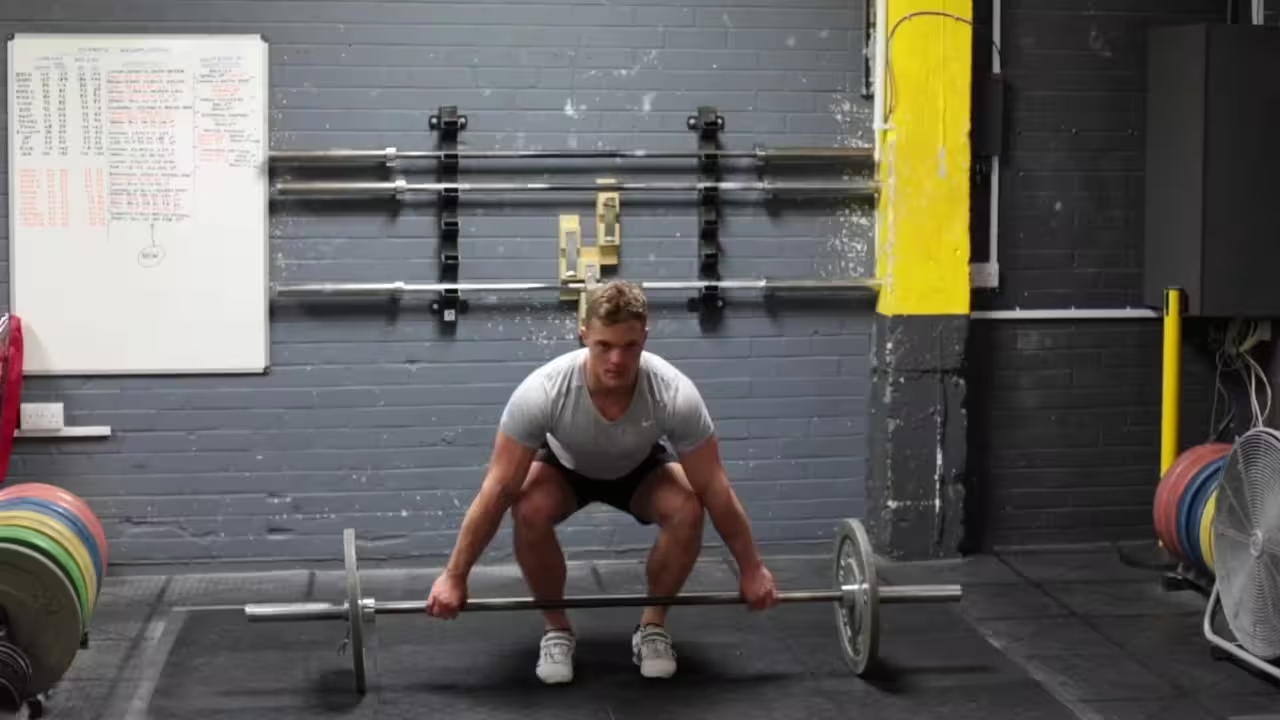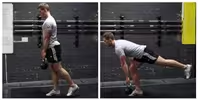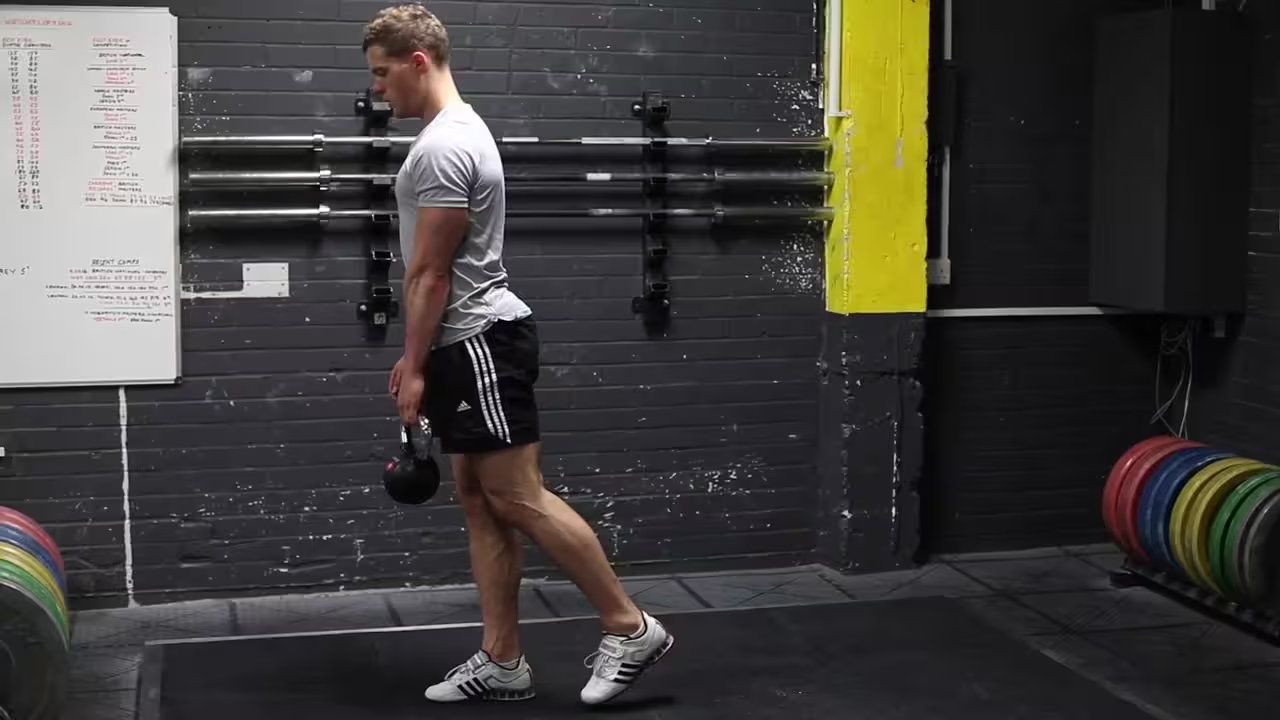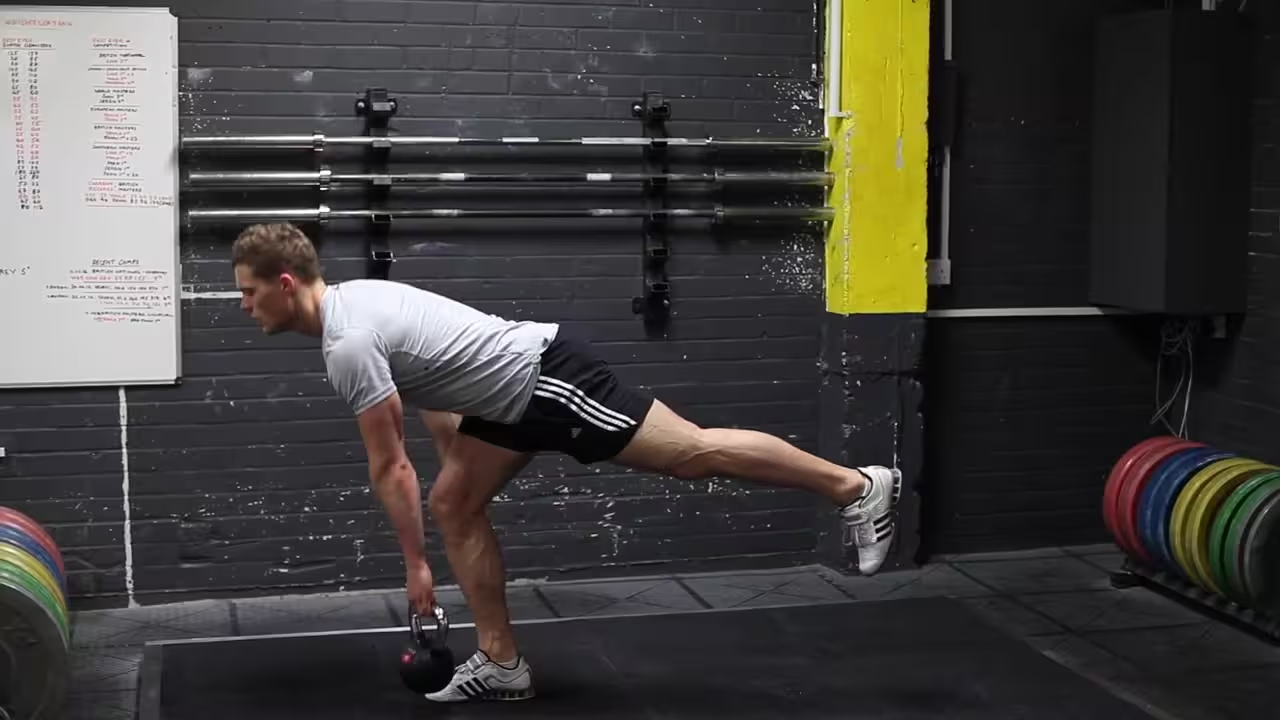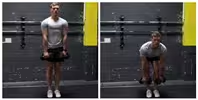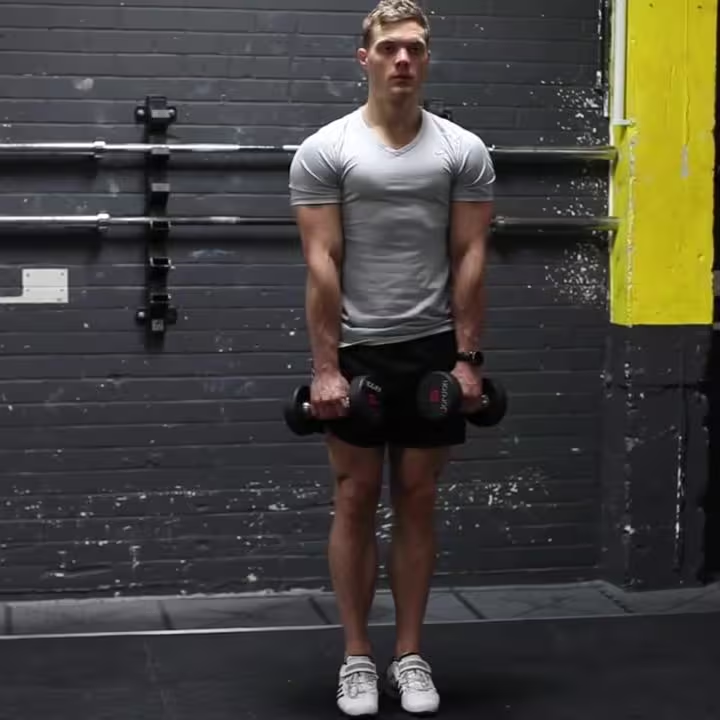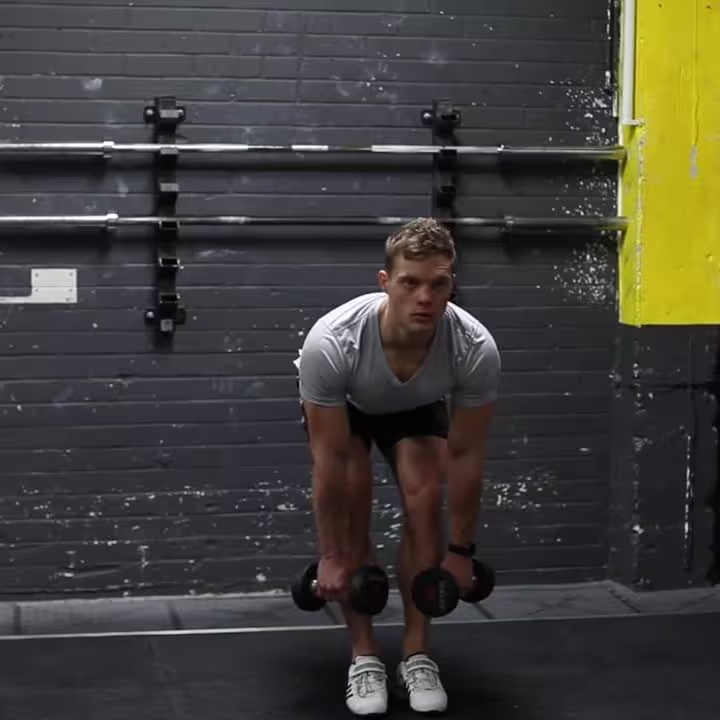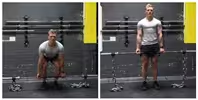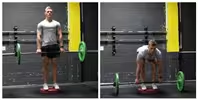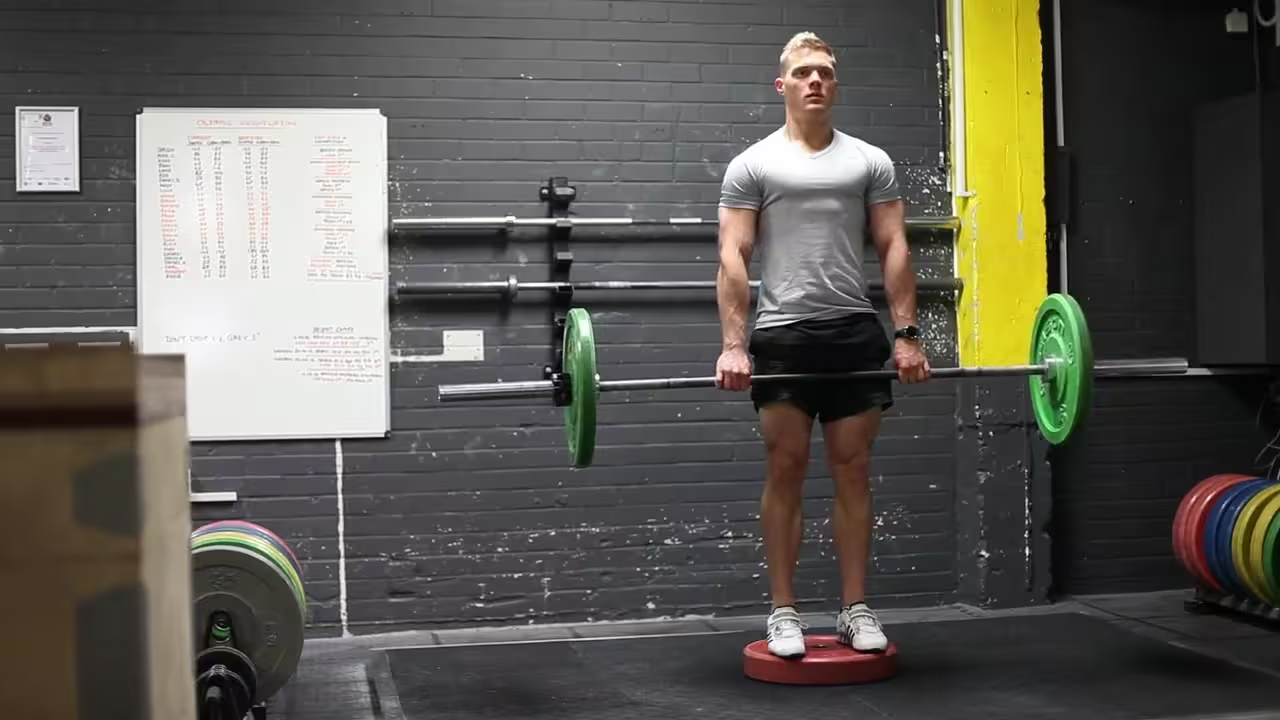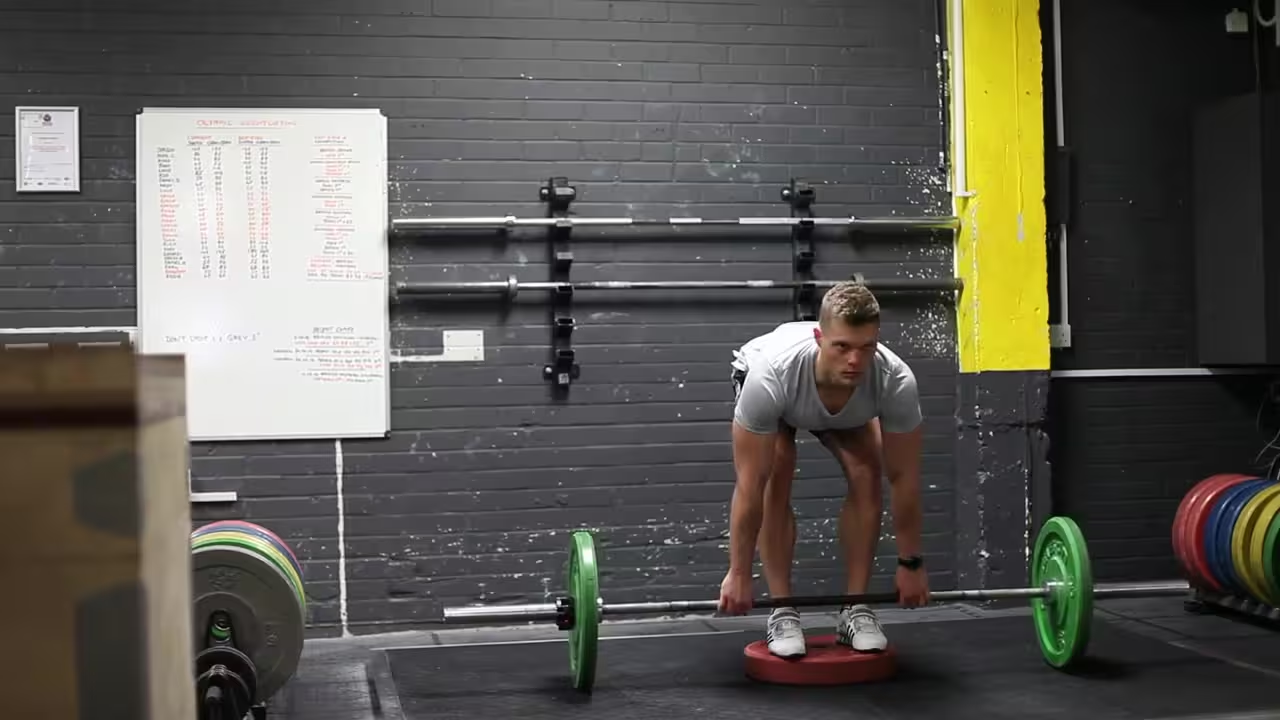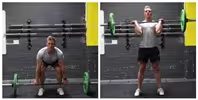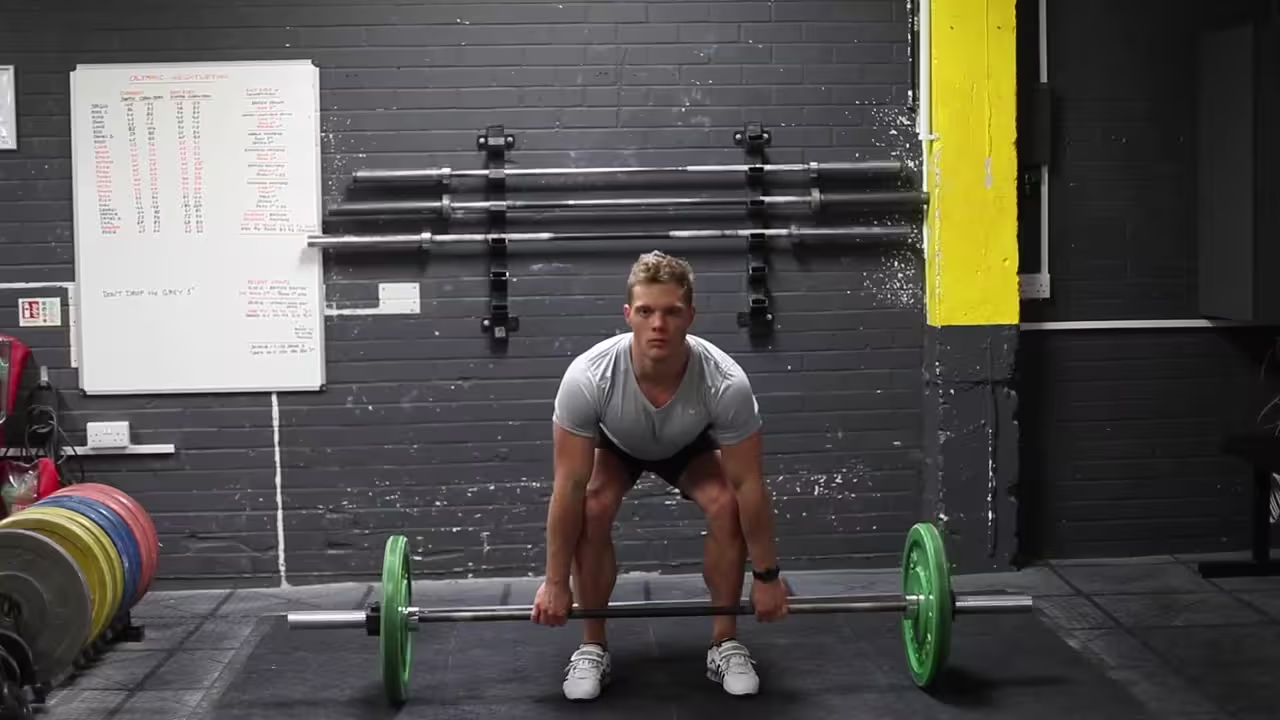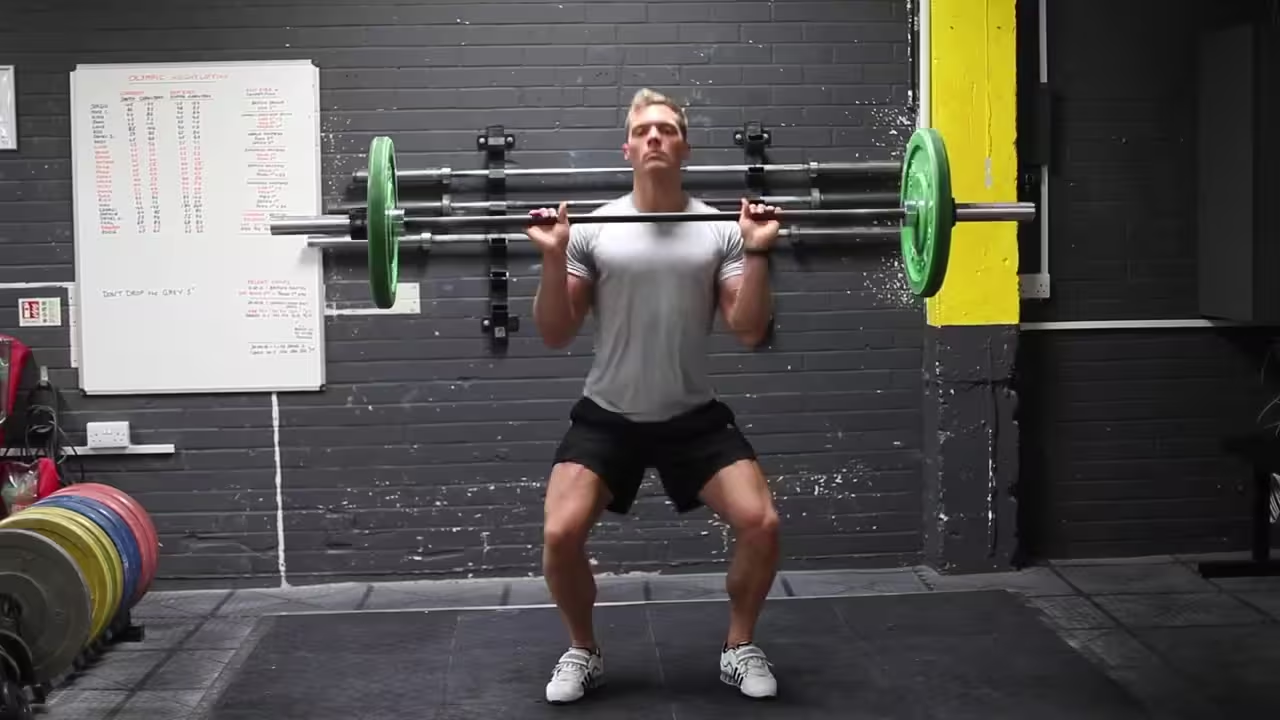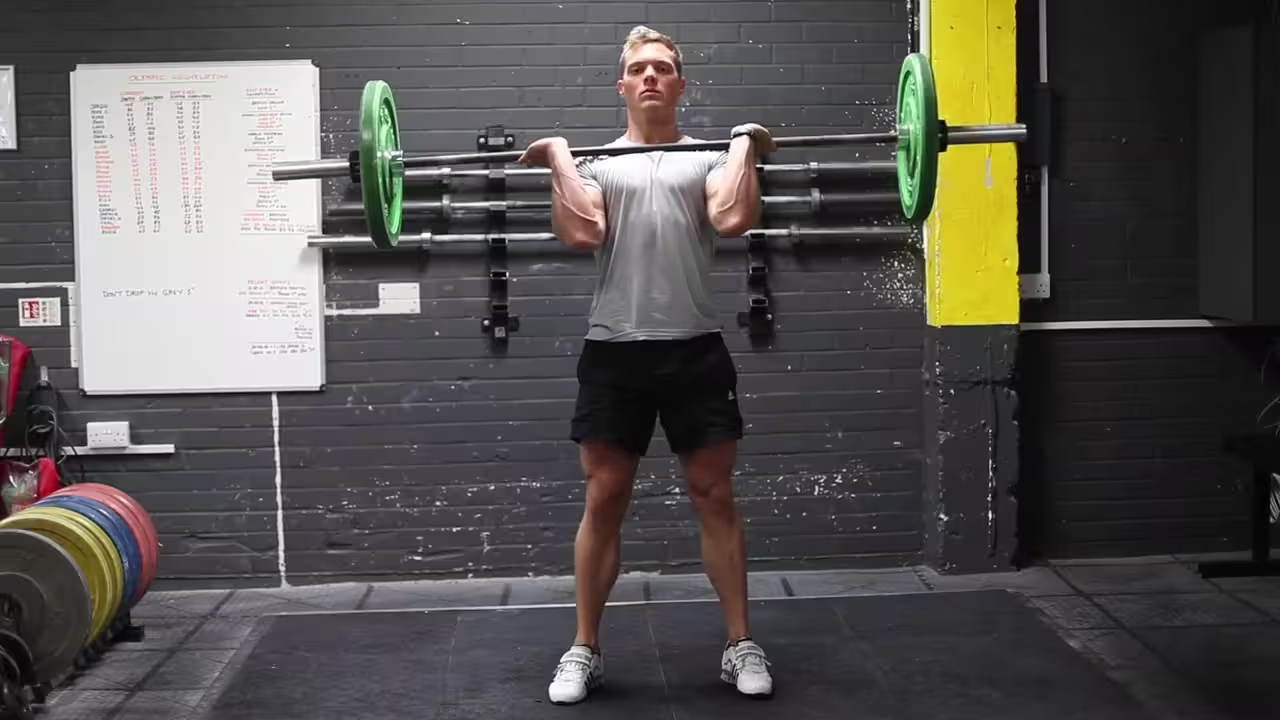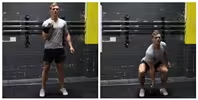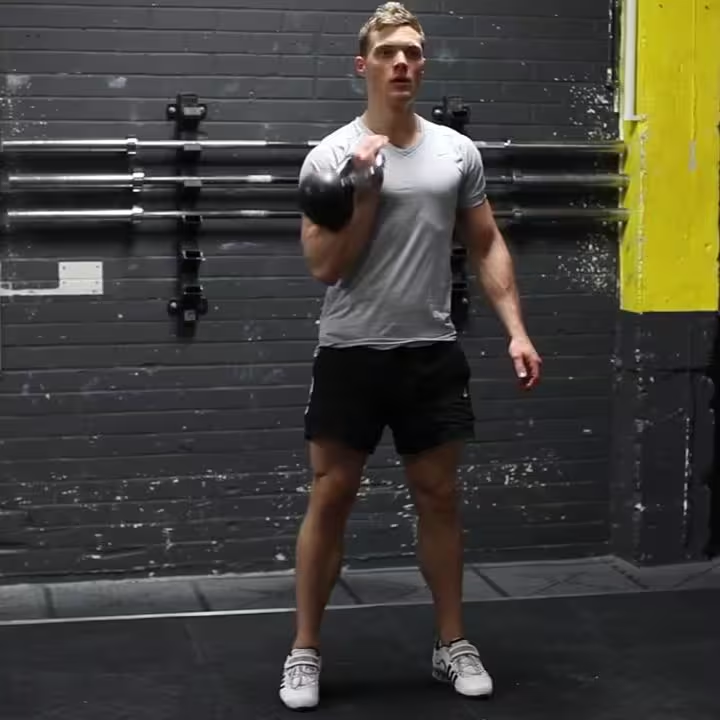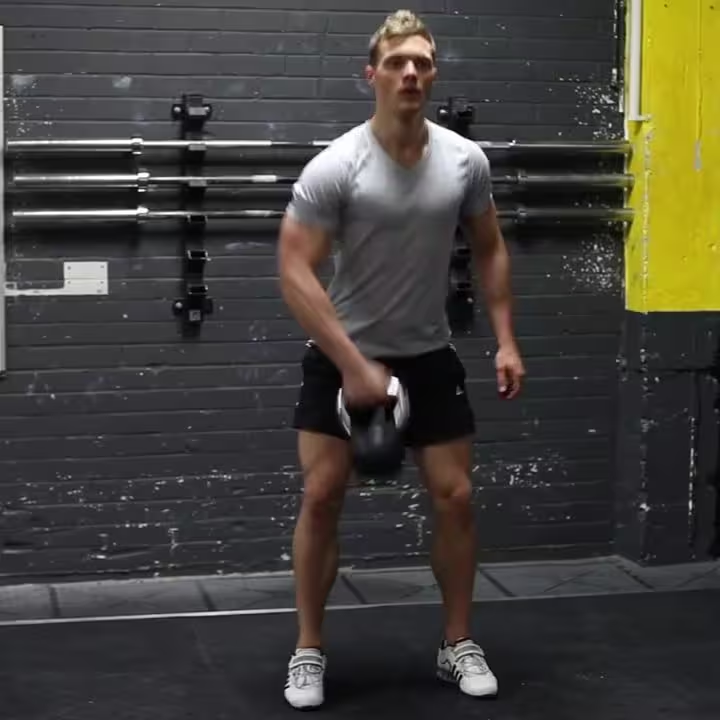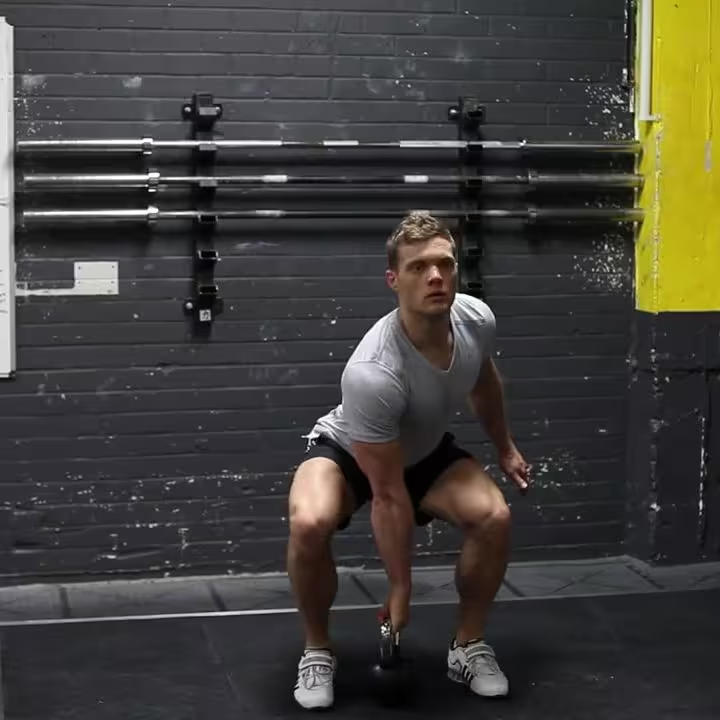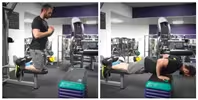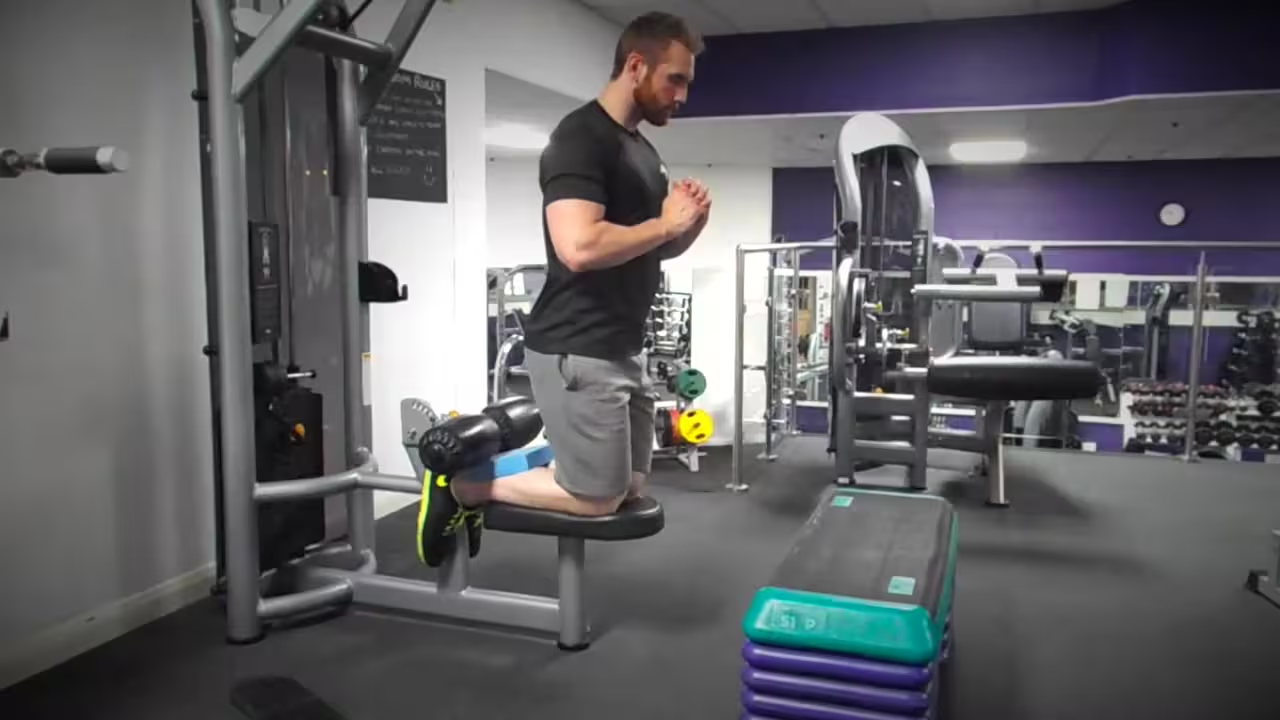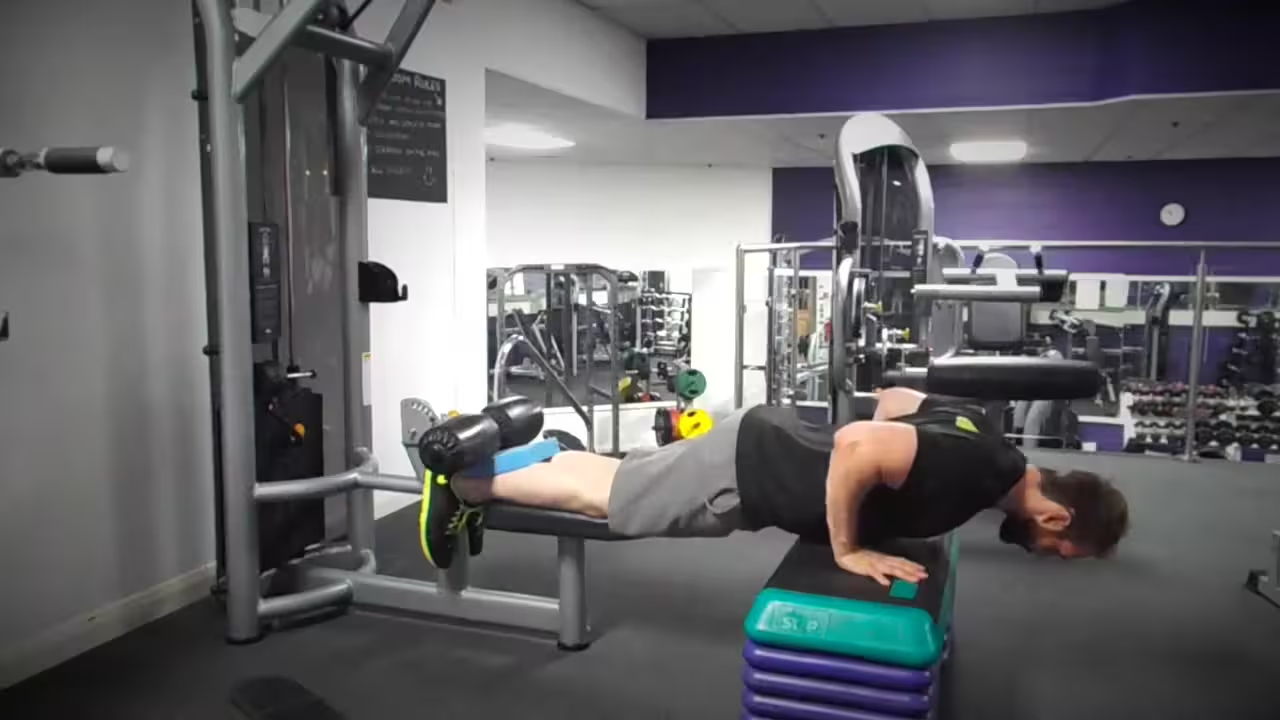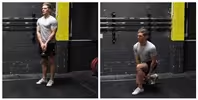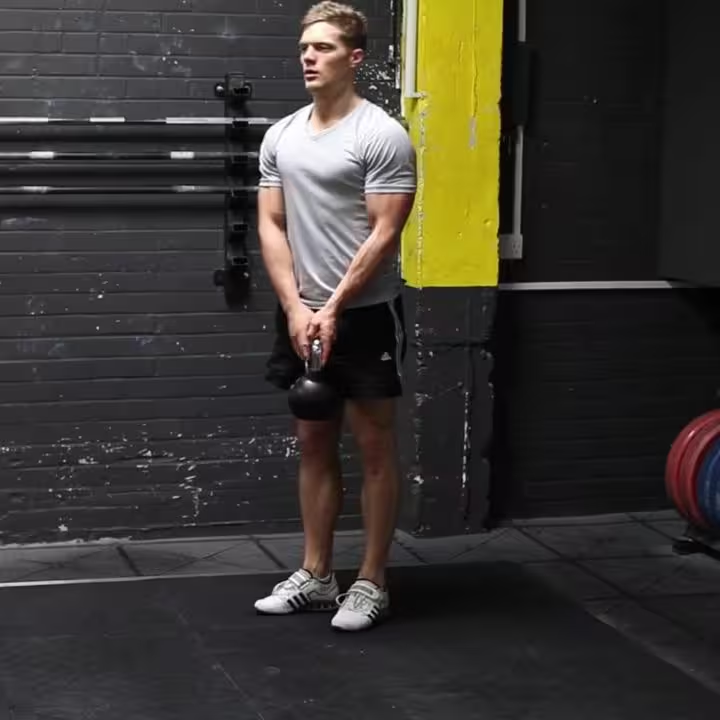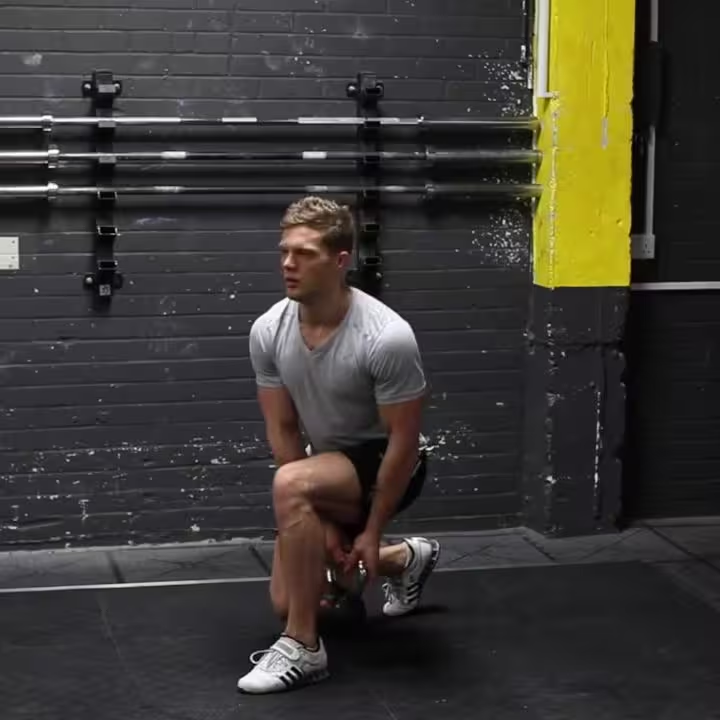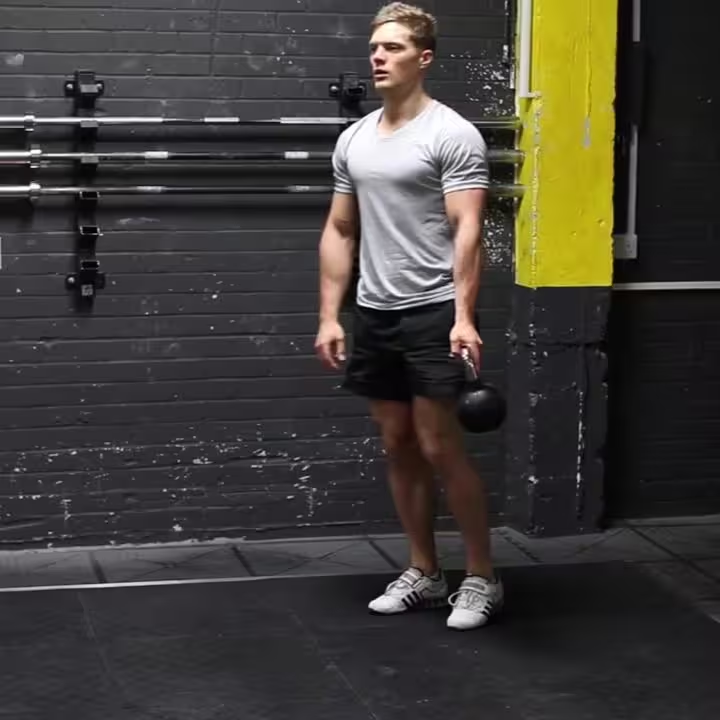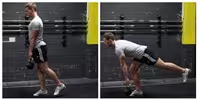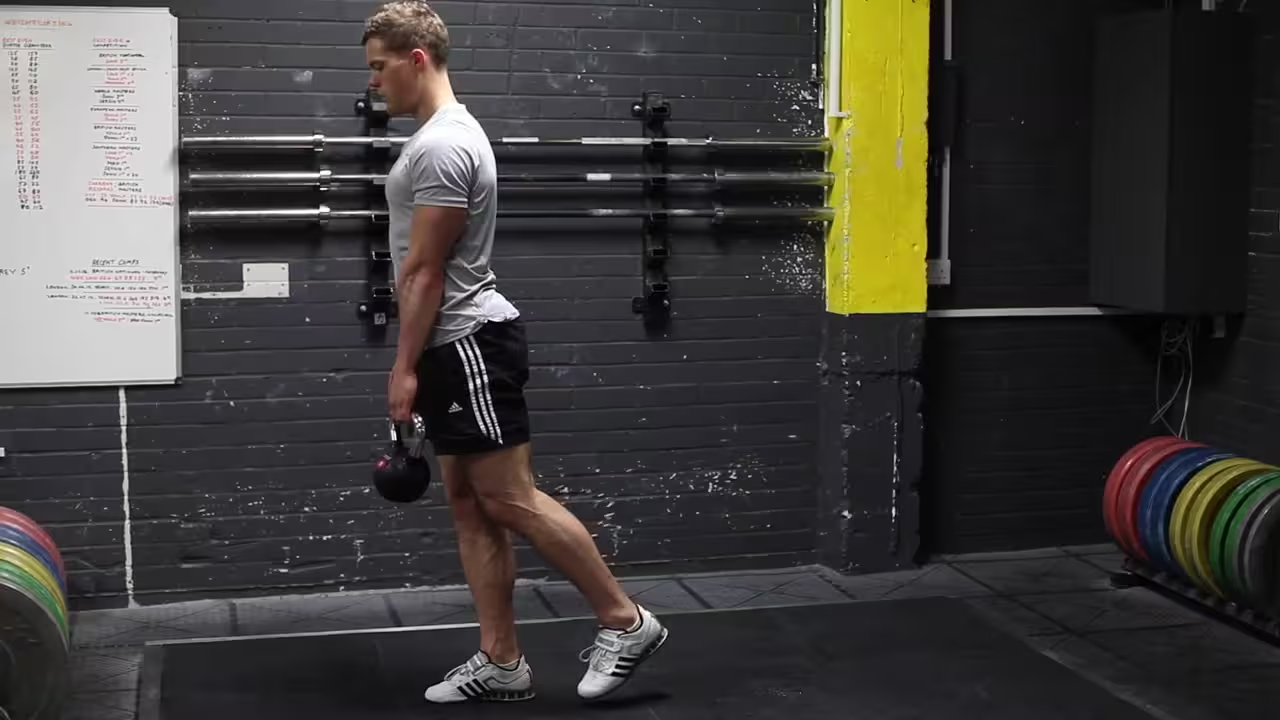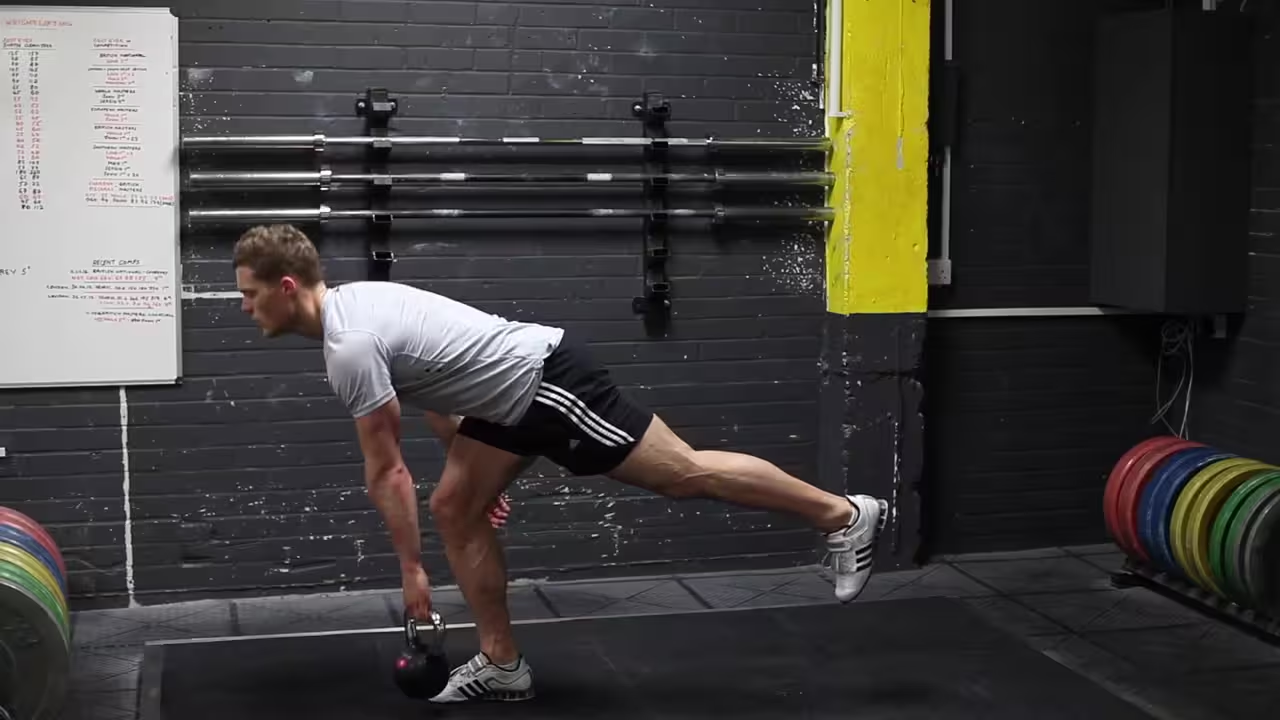8.3
Excellent
Stiff-Legged Barbell Deadlift Images
Stiff-Legged Barbell Deadlift Instructions
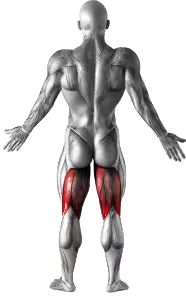
- Grasp a bar using an overhand grip (palms facing down). You may need some wrist wraps if using a significant amount of weight.
- Stand with your torso straight and your legs spaced using a shoulder width or narrower stance. The knees should be slightly bent. This is your starting position.
- Keeping the knees stationary, lower the barbell to over the top of your feet by bending at the waist while keeping your back straight. Keep moving forward as if you were going to pick something from the floor until you feel a stretch on the hamstrings. Inhale as you perform this movement.
- Start bringing your torso up straight again by extending your hips until you are back at the starting position. Exhale as you perform this movement.
- Repeat for the recommended amount of repetitions.
8.9
Excellent
Also known as Snatch-Grip Deadlift.
Snatch Deadlift Images
Snatch Deadlift Instructions

- The snatch deadlift strengthens the first pull of the snatch. Begin with a wide snatch grip with the barbell placed on the platform. The feet should be directly under the hips, with the feet turned out. Squat down to the bar, keeping the back in absolute extension with the head facing forward.
- Initiate the movement by driving through the heels, raising the hips. The back angle should remain the same until the bar passes the knees.
- At that point, drive your hips through the bar as you lay back. Return the bar to the platform by reversing the motion.
8.2
Excellent
Single Leg Deadlift Images
Single Leg Deadlift Instructions

- Hold a kettlebell in one hand, hanging to the side. Stand on one leg, on the same side that you hold the kettlebell.
- Keeping that knee slightly bent, perform a stiff-legged deadlift by bending at the hip, extending your free leg behind you for balance. Continue lowering the kettlebell until you are parallel to the ground, and then return to the upright position. Repeat for the desired number of repetitions.
The Romanian Deadlift with Dumbbells is a highly effective exercise that targets the hamstrings, glutes, and lower back. It’s a compound movement that involves hinging at the hips while maintaining a neutral spine, which helps to engage the posterior chain. Performing this exercise with dumbbells increases the range of motion and improves grip strength, making it a great addition to any lower body or full-body workout routine.
Romanian Deadlift with Dumbbells Video
How to Perform Romanian Deadlifts with Dumbbells
Step-by-Step Instructions:
- Stand Tall with Dumbbells: Stand with your feet shoulder-width apart, holding a dumbbell in each hand with a neutral grip (palms facing your thighs).
- Brace Your Core: Engage your core muscles to protect your lower back throughout the movement.
- Hinge at the Hips: Keeping your knees slightly bent, push your hips back and lower the dumbbells towards the floor while maintaining a neutral spine.
- Reach the End Range: Lower the dumbbells until you feel a deep stretch in your hamstrings, ensuring your back stays straight and your chest stays open.
- Return to Starting Position: Push through your heels to return to the starting position, squeezing your glutes and hamstrings at the top.
- Complete the Reps: Repeat the movement for your desired number of reps, ensuring you maintain proper form throughout.
Romanian Deadlift with Dumbbells Benefits
- Increased Hamstring Flexibility: Romanian Deadlifts enhance flexibility and mobility in the hamstrings, reducing the risk of injury.
- Stronger Posterior Chain: This exercise targets key muscles in the posterior chain, including the glutes, hamstrings, and lower back, improving overall strength and posture.
- Improved Deadlift Performance: By building strength in the hamstrings and glutes, this exercise enhances your overall deadlift performance.
- Better Core Stability: The Romanian Deadlift strengthens the core muscles, which helps stabilize the body during dynamic movements.
- Versatility: Performing this exercise with dumbbells adds variety to your training and improves grip strength.
Romanian Deadlift with Dumbbells Muscles Worked
The Romanian Deadlift with Dumbbells primarily targets the hamstrings and glutes. Secondary muscles include the lower back (erector spinae) and the forearms for grip strength. This movement helps to develop the posterior chain and improve overall lower body strength and posture.

Related Exercises
9.2
Excellent
Also known as Straight-Legged Deadlift.
Romanian Deadlift from Deficit Images
Romanian Deadlift from Deficit Instructions

- Begin standing while holding a bar at arms length in front of you. You can stand on a raised platform to increase the range of motion.
- Begin by flexing the knees slightly, and then flex at the hip, moving your butt back as far as possible, lowering the torso as far as flexibility allows. The back should remain in absolute extension at all times, and the bar should remain in contact with the legs. If done properly, there should be heavy tension felt in the hamstrings.
- Reverse the motion to return to the starting position.
8.7
Excellent
Power Clean Images
Power Clean Instructions

Note: This exercise is extremely complex and requires the execution of many phases.
Phase 1: Starting Position
- Stand with your feet slightly wider than shoulder width apart and toes pointing out slightly.
- Squat down and grasp bar with a closed, pronated grip. Your hands should be slightly wider than shoulder width apart outside knees with elbows fully extended.
- Place the bar about 1 inch in front of your shins and over the balls of your feet.
- Your back should be flat or slightly arched, your chest held up and out and your shoulder blades should be retracted.
- Keep your head in a neutral position (in line with vertebral column and not tilted or rotated) with your eyes focused straight ahead. Inhale during this phase.
Phase 2: First Pull Phase
- Lift the bar from the floor by forcefully extending the hips and the knees as you exhale. Tip:The upper torso should maintain the same angle. Do not bend at the waist yet and do not let the hips rise before the shoulders (this would have the effect of pushing the glutes in the air and stretching the hamstrings.
- Keep elbows fully extended with the head in a neutral position and the shoulders over the bar.
- As the bar raises keep it as close to the shins as possible.
Phase 3: Transition or Scoop Phase
- As the bar passes the knees, thrust your hips forward and slightly bend the knees to avoid locking them. Tip: At this point your thighs should be against the bar.
- Keep the back flat or slightly arched, elbows fully extended and your head neutral. Tip: You will hold your breath until the next phase.
Phase 4: Second Pull Phase
- Inhale and then forcefully and quickly extend your hips and knees and stand on your toes.
- Keep the bar as close to your body as possible. Tip: Your back should be flat with the elbows pointed out to the sides and your head in a neutral position. Also, keep your shoulders over the bar and arms straight as long as possible.
- When your lower body joints are fully extended, shrug the shoulders upward rapidly without letting the elbows flex yet. Exhale during this portion of the movement.
- As the shoulders reach their highest elevation flex your elbows to begin pulling your body under the bar.
- Continue to pull the arms as high and as long as possible. Tip: Due to the explosive nature of this phase, your torso will be erect or with an arched back, your head will be tilted back slightly and your feet may lose contact with the floor.
Phase 5: Catch Phase
- After the lower body has fully extended and the bar reaches near maximal height, pull your body under the bar and rotate the arms around and under the bar.
- Simultaneously, flex the hips and knees into a quarter squat position.
- Once the arms are under the bar, inhale and then lift your elbows to position the upper arms parallel to the floor. Rack the bar across the front of your collar bones and front shoulder muscles.
- Catch the bar with an erect and tight torso, a neutral head position and flat feet. Exhale during this movement.
- Stand up by extending the hips and knees to a fully erect position.
Phase 6: Downward Movement Phase
- Lower the bar by gradually reducing the muscular tension of the arms to allow a controlled descent of the bar to the thighs. Inhale during this movement.
- Simultaneously flex the hips and knees to cushion the impact of the bar on the thighs.
- Squat down with the elbows fully extended until the bar touches the floor.
- Start over at Phase 1 and repeat for the recommended amount of repetitions.
8.6
Excellent
Also known as Kettlebell Clean.
One-Arm Kettlebell Clean Images
One-Arm Kettlebell Clean Instructions

- Place a kettlebell between your feet. As you bend down to grab the kettlebell, push your butt back and keep your eyes looking forward.
- Clean the kettlebell to your shoulders by extending through the legs and hips as you raise the kettlebell towards your shoulder. The wrist should rotate as you do so.
- Return the weight to the starting position.
9.1
Excellent
Also known as Glute-Ham Raise and Leg Curl.
Natural Glute Ham Raise Images
Natural Glute Ham Raise Instructions

- Using the leg pad of a lat pulldown machine or a preacher bench, position yourself so that your ankles are under the pads, knees on the seat, and you are facing away from the machine. You should be upright and maintaining good posture.
- This will be your starting position. Lower yourself under control until your knees are almost completely straight.
- Remaining in control, raise yourself back up to the starting position.
- If you are unable to complete a rep, use a band, a partner, or push off of a box to aid in completing a repetition.
8.7
Excellent
Lunge Pass Through Images
Lunge Pass Through Instructions

- Stand with your torso upright holding a kettlebell in your right hand. This will be your starting position.
- Step forward with your left foot and lower your upper body down by flexing the hip and the knee, keeping the torso upright. Lower your back knee until it nearly touches the ground.
- As you lunge, pass the kettlebell under your front leg to your opposite hand.
- Pressing through the heel of your foot, return to the starting position.
- Repeat the movement for the recommended amount of repetitions, alternating legs.
8.6
Excellent
Also known as Single-Leg Deadlift.
Kettlebell One-Legged Deadlift Images
Kettlebell One-Legged Deadlift Instructions

- Hold a kettlebell by the handle in one hand. Stand on one leg, on the same side that you hold the kettlebell.
- Keeping that knee slightly bent, perform a stiff legged deadlift by bending at the hip, extending your free leg behind you for balance.
- Continue lowering the kettlebell until you are parallel to the ground, and then return to the upright position.

